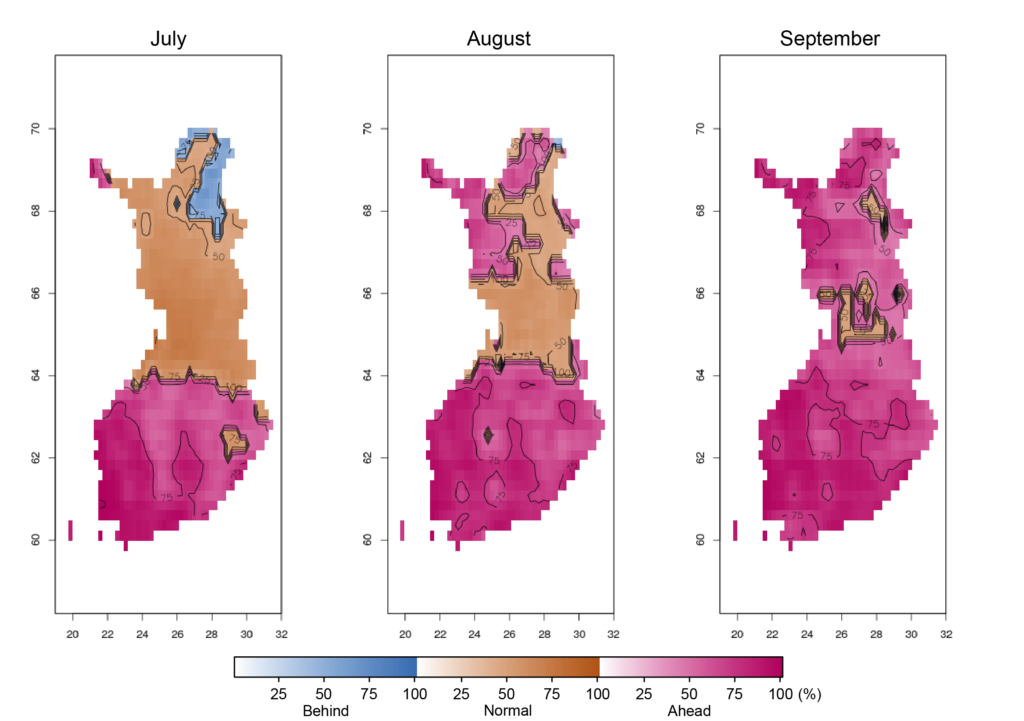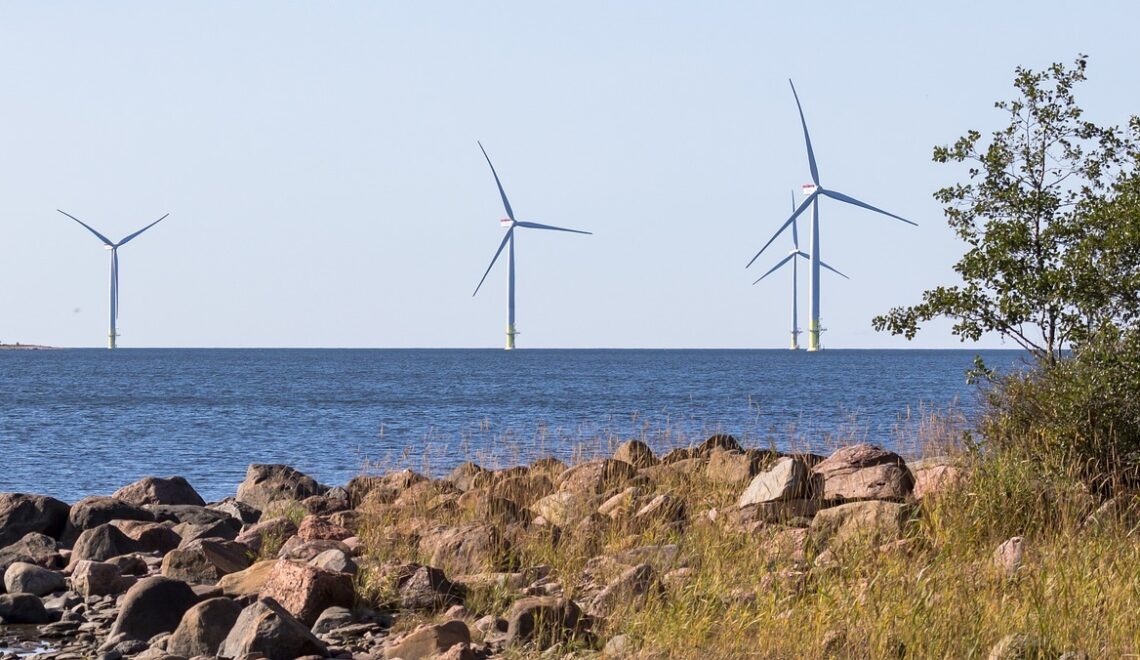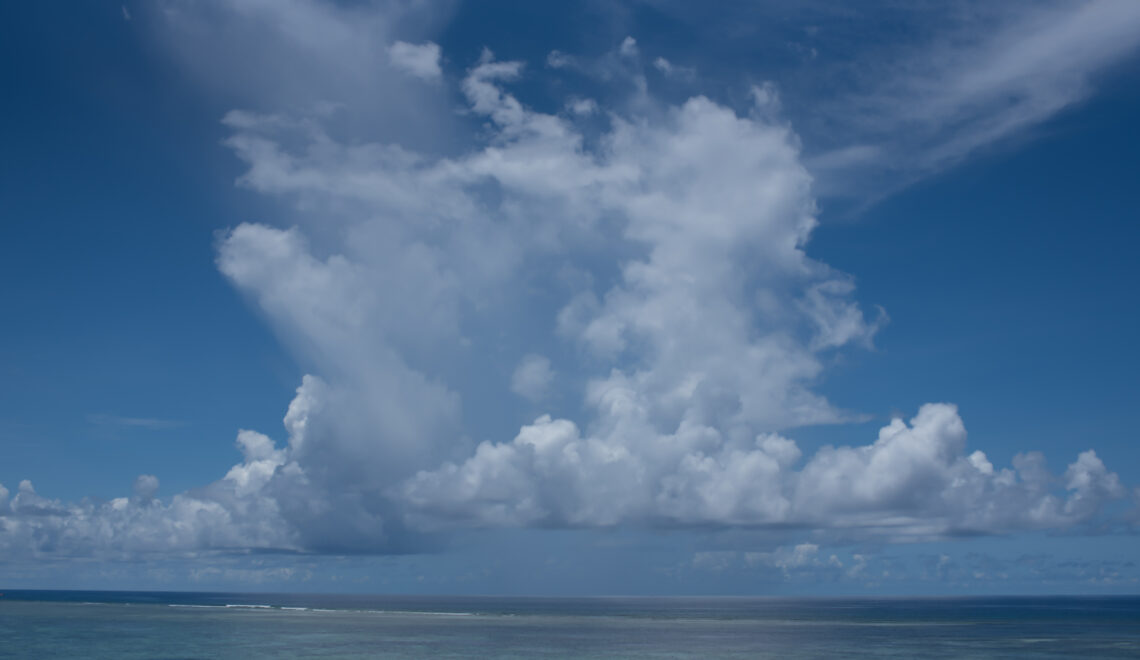Climate services are defined as the provision of climate information in a way that assists decision making by individuals and organizations. Climate indices are useful synthetic measures, easily comprehensible for the stakeholders, managers, end-users and the public in general.
ALI NADIR ARSLAN1, ANDREA VAJDA1, OTTO HYVÄRINEN1, KATARIINA VEIJOLA1, SERGIO M. VICENTE-SERRANO2, LILIANA VELEA3 , ENRIC AGUILAR4
1Finnish Meteorological Institute (FMI)
2Instituto Pirenaico de Ecología, Consejo Superior de Investigaciones Científicas (IPE–CSIC)
3National Meteorological Adminstration (MeteoRo)
4University Rovira I Virgili (URV)
The project “Integrated approach for the development across Europe of user oriented climate indicators for GFCS high-priority sectors: agriculture, disaster risk reduction, energy, health, water and tourism”, INDECIS, constitutes a pan-European effort for developing an integrated approach to produce a set of relevant climate indices targeting the high priority sectors of the World Meteorological Organization’s Global Framework for Climate Services (GFCS) on agriculture, disaster risk reduction, energy, health, water plus tourism. The INDECIS consortium (see www.indecis.eu) includes 16 institutions from 12 countries and intends to maximize the benefits achievable from the use of observational data across Europe to develop climate indicators and climate services useful to assess the effects of climate variability, including extreme events, and climate change over socioeconomic systems. INDECIS consists of seven Work Packages (WPs) which address (a) identification and preparing a catalog of climate data sets and portal, (b) data quality and homogeneity, (c) definition and implementation of indices, (d) evaluation of gridded datasets, and (e) communication of climate services developed in the project.
The INDECIS project prepared a comprehensive catalogue of a broad range of standard climate indices on the targeted sectors. The list of the full catalogue of climate indices can be found in the report, entitled, “Report on the Inventory and Catalog of Indices Datasets”. The software suite for indices calculation can be found together with all reports from the webpage of the project (www.indecis.eu).
Non-climatic data covering a wide array of sectorial data in Europe, mainly focusing on agriculture, human health, water resources, energy and tourism were collected. These datasets include different statistics, spanning a broad range of specific sectorial information, such as forest fires, reservoir storages, landslides, mortality/morbidity, hydropower production, road accidents, crop yields, phenological indicators, economic and human losses, water availability, groundwater quality, tourism nights, etc. The purpose of collecting sectoral data is to assess the calculated climate indices and create future climate services that can provide local and national European decision makers and stakeholders with information and tools required for better adaptation and planning to climate change. The sectorial data in Finland were gathered from the Finnish tourist board, Statistics Finland, the Finnish Ministry of economic affairs and employment, Visit Finland, Natural resources institute in Finland. The details of the sectoral data gathered in other European countries are available and can be accessed from the project webpage. Based on data availability, the sectorial data were provided at different temporal scales (e.g. daily, monthly, and annual) and at various spatial scales (e.g. hydrological catchment, administrative divisions [e.g. counties, governments], and national level). As an example, statistics related to tourism sector in Finland are available via the Statistical Service Rudolf (http://visitfinland.stat.fi/PXWeb/pxweb/en/VisitFinland/?rxid=494a85b1-a3f9-4a7c-9a54b920410657aa), in collaboration with Visit Finland and Statistics Finland. We will continue to assess the usefulness of the climate indices using the sectorial data available focusing on tourism, agriculture and energy. The prediction skill of seasonal forecasts over the Northern latitude is gradually improving; summer temperature has shown perfect to marginally useful skill (Weisheimer and Palmer 2014, Wehrli et al. 2017), while precipitation a lower although not negligible skill (Weisheimer and Palmer 2014, Mishra et al. 2017). Driven by the need of end-users for tailored seasonal forecast products, we assessed the applicability of seasonal forecast outputs in agriculture and winter tourism, and developed and piloted a set of seasonal climate indices for the targeted sectors in Finland. The seasonal forecast indices were selected, designed and tested together with end-users and were developed using the SEAS5 seasonal forecast system provided by ECMWF (Johnson et al. 2019). The quality of forecasts was assessed using re-forecast (or hindcast) data for the period 1993-2016, and the substantial systematic biases from raw model outputs were reduced by applying various bias-adjustment methods (Vajda and Hyvärinen, submitted to ASR). Six temperature and precipitation-based indices serving the agriculture, i.e. mean temperature, growing season progress, growing degree days, cold spell, total precipitation, dry conditions were co-designed with the Central Union of Agricultural Producers and Forest Owners from Finland. The computed indices were compiled into seasonal climate outlooks (Fig. 1) consisting of three monthly maps (lead month 0, 1 and 2) and piloted with more than 200 farmers during June-October 2019, followed by another pilot phase during April-October 2020. In addition to the forecast performance analysis performed at the end of the first pilot, a feedback survey was conducted with the farmers in order to gather their opinion about the usability of the newly developed outlooks. Similar approach was applied in the development process of the five seasonal indices targeting ski-resorts: mean temperature, probability of snow cover, snow depth, conditions for artificial snow production, occurrence of maximum wind speed. The Finnish Ski Association and six ski resorts from Finland were involved in the design of seasonal indices and the on-going testing phase during November 2019-April 2020. The developed seasonal forecast services might contribute to the creation of tailored climate services for the end-users. Involving the users in co-designing and testing of seasonal forecast products provided us qualitative information both on the requirements concerning both the content and visualization of the new forecast products and their usability and value.

Acknowledgements: This work is conducted under INDECIS project part of ERA4CS, an ERA-NET initiated by JPI Climate, and funded by FORMAS (SE), DLR (DE), BMWFW (AT), IFD (DK), MINECO (ES), ANR (FR) with co-funding by the European Union (Grant 690462).
References
Johnson, S. J., et al., 2019: SEAS5: The new ECMWF seasonal forecast system, Geosci. Model Dev., 12, 1087–1117, DOI: https://doi.org/10.5194/gmd-12-1087-2019
Mishra, N., Prodhomme, C. and Guemas, V., 2019: Multi-model skill assessment of seasonal temperature and precipitation forecast over Europe, Clim. Dyn. 52, 4207-4225, DOI: https://doi.org/10.1007/s00382-018-4404-z
Vajda, A. and Hyvärinen, O.: Development of seasonal climate outlooks for agriculture in Finland, submitted to ASR Special Issue “19th EMS Annual Meeting: European Conference for Applied Meteorology and Climatology 2019”.
Wehrli, K., Bhend, J. and Liniger, M. A., 2017: Systematic quality assessment of an operational seasonal forecasting system, Technical Report MeteoSwiss, 263, 52 pp.
Weisheimer, A. and Palmer, T. N., 2014: On the reliability of seasonal climate forecasts, J. Roy. Soc. Interface, 11, DOI: https://doi.org/10.1098/rsif.2013.1162
HOW TO CITE THIS ARTICLE:
Arslan A. N., Vajda A., Hyvärinen O., Veijola K., Vicente-Serrano S. M., Velea L., and Aguilar E., 2020: Sectoral-based indices for creating future climate services, FMI’s Climate Bulletin: Research Letters, 2(1), 10–11, DOI: https://doi.org/10.35614/ISSN-2341-6408-IK-2020-04-RL
CITATION INFORMATION:
Authors: Ali Nadir Arslan, Andrea Vajda, Otto Hyvärinen, Katriina Veijola, Sergio M. Vicente-Serrano, Liliana Velea, and Enric Aguilar
Received: March 2, 2020
Accepted: April 30, 2020
First online: May 15, 2020
Published: May 25, 2020
Journal: FMI’s Climate Bulletin: Research Letters
Volume: 2
Issue: 1
Pages: 10–11
DOI: https://doi.org/10.35614/ISSN-2341-6408-IK-2020-04-RL
This article is part of the ERA4CS Special Issue.
Header image: Pixabay




